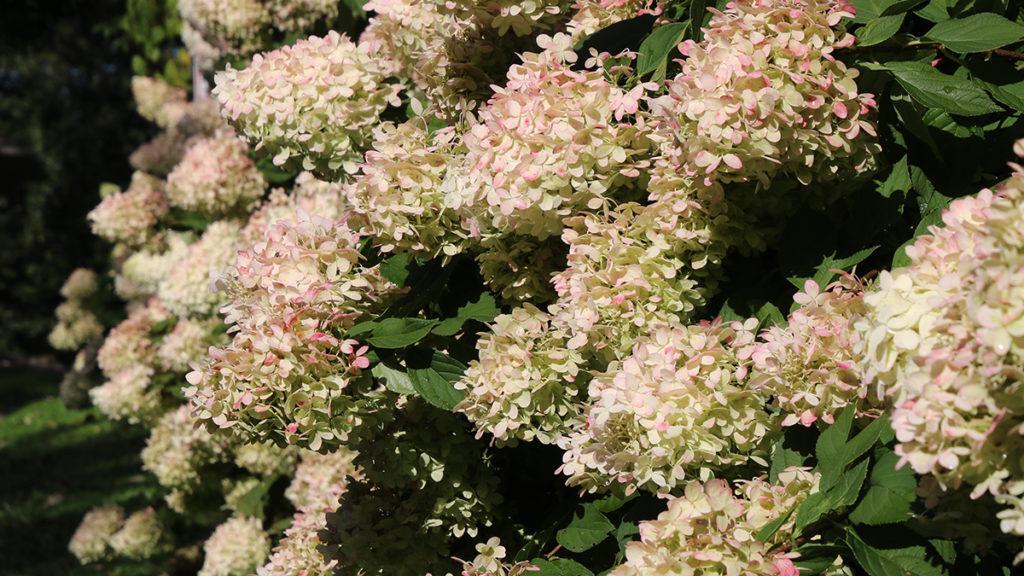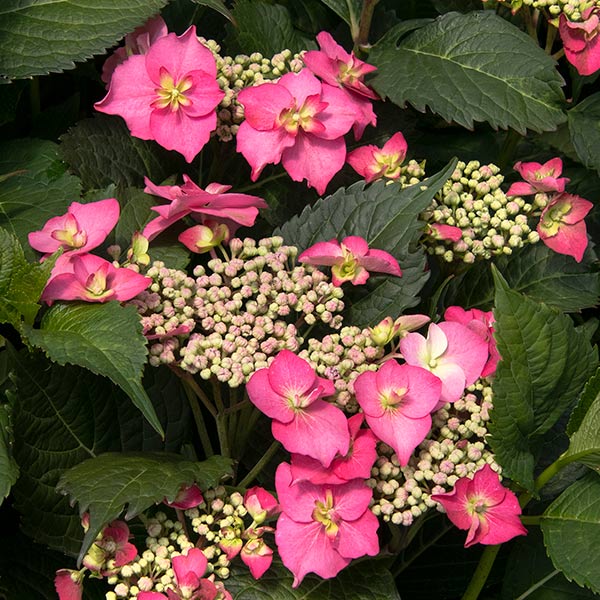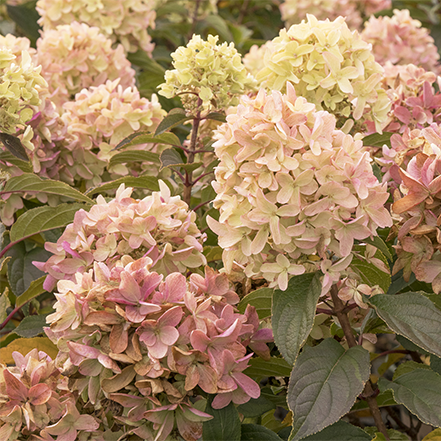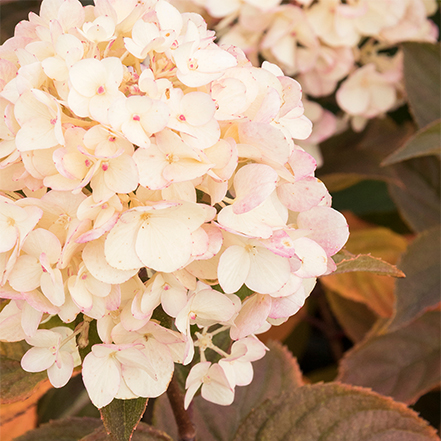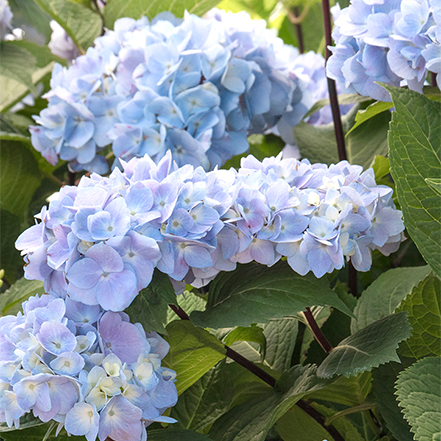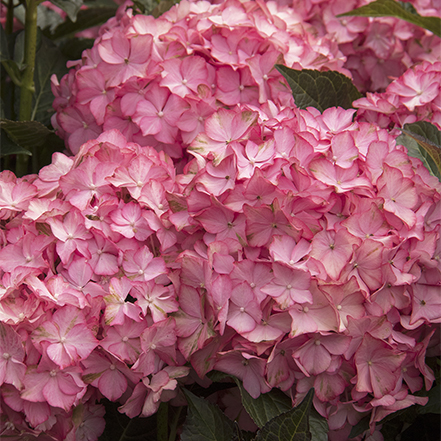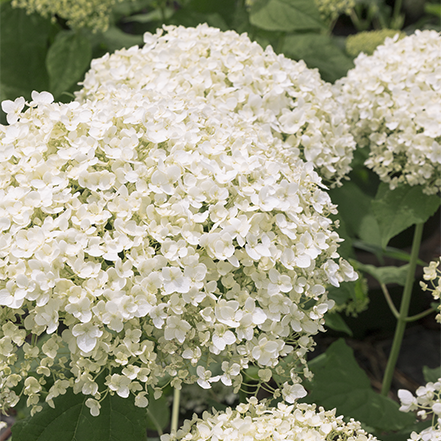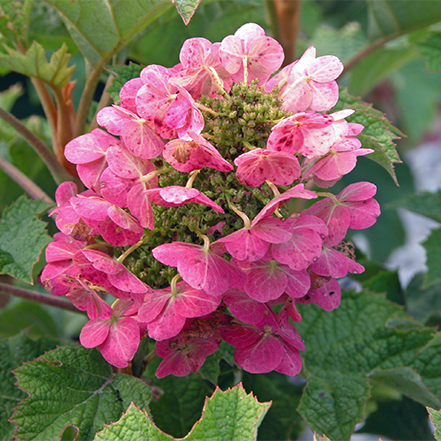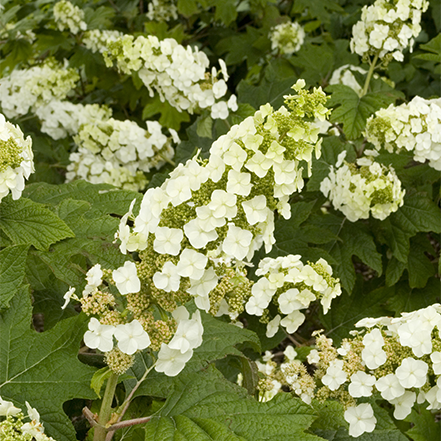There is a chill in the air and the signs of autumn are everywhere. Soon it will be time to put the garden to bed. All season long hydrangeas reward us with big, beautiful, abundant blooms. It’s fair to say they are givers. Now, it’s time to give back. With goodnight kisses and sweat dreams wishes, the time to tuck in hydrangeas is upon us.
Here in Minnesota, unpredictable winter weather extremes, snow totals, and freeze/thaw cycles swing wildly. Same as our vitamin d deprived, cabin-fever-fueled moods. Although many hydrangeas are considered hardy, all of this can throw them for a loop. They need some attention in order to survive the winter and coming back bigger and better next year. It's true that hydrangeas grown in warmer climates don't require as much post-season primping as those grown in our zone. However, there's no one who wouldn't be grateful for a bit of TLC right about now.
Implement these steps to maximize your hydrangea potential so you will be the giver of this time next season!
(Is it time to prune? Yes and no. Here’s our advice on which hydrangeas to prune now and which can wait for spring.)
Don’t Stop Watering
Take the pledge! Raise your right hand and say “I will water my hydrangeas until the ground freezes solid.” Very good. It’s vital to water hydrangeas deeply and consistently as they are thirsty plants by nature. Their name basically means hydration, but we don’t need to geek out with Latin right now! Cool, drying winter winds suck the moisture right out of the plants – and hydrangeas don’t use lip balm. Doesn’t have to be hot to be dry!
In areas where a freeze is not an issue, water deeply but infrequently throughout the winter. This depends on the amount of rainfall you receive.
Here’s how:
One way is to make a small hole in the side of a 5-gallon bucket and fill with water. Then set at the base of the plant, allowing the water to trickle out slow. Another is to turn on your hose to a slow trickle. Then place at the base of the plant for an hour or so.
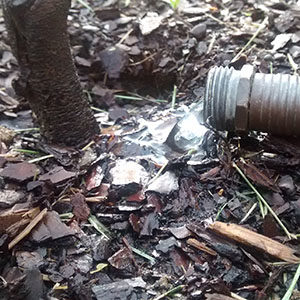
Give Them One Last Hearty Meal
Give your hydrangeas a boost for the next growing season by adding compost to your beds in the fall. After a good night’s sleep, everybody feels better with a good breakfast in their belly. The same is true for hydrangeas. They’ll be hungry for some good compost after a long winter’s nap. Applied now, compost can break down overwinter, making nutrients readily available in spring. Even in areas without a deep freeze, a few inches of compost is a good idea. We’re only talking compost here! Don’t offer your hydrangeas nitrogen-rich fertilizers which might incline them to put out new leafy growth.
Here’s how:
In colder zones, when the ground has frozen and before applying mulch, top dress with compost. Or, well-aged manure or other organic matter. This nutrient- rich, organic fertilizer will break down over the winter. The nutrients will be available to the plant in spring. In warmer zones, apply compost in late fall or early winter.
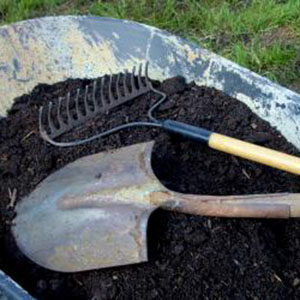
Mulch Matters
In colder zones mulching protects and insulates the crown and roots of your hydrangeas from extreme winter temperatures. In warmer zones it helps keep moisture in and weeds out. If all goes as it should, snow acts as a natural insulator. Weird winters with little snowfall and drastic temperature swings are detrimental to plants. To give hydrangeas their best chance at success, apply a layer of chunky mulch around the base of the plant. Decorative mulch is helpful but we recommend straw, marsh hay, or fallen leaves.
Here’s how:
After the ground has frozen (or in warmer zones late fall or early winter) and you've top-dressed with compost. Apply a 6"-8" layer of mulch. This insulates plants and protects plants from the heave-ho of spring freeze/thaw cycles. This can push them right out of the soil. Mulching too early invites rodents to make this their cozy winter dwelling. Thus causes rotting and disease, or tricks the plant into thinking it's time to wake up. Be patient, just because your neighbors are doing it early, doesn’t mean you have to too.
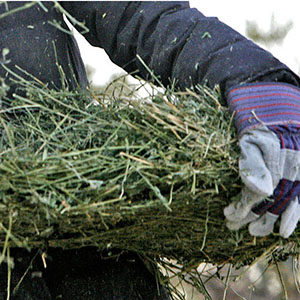
Keep Them Cozy
Whether or not hydrangeas need protection depends on how cold the winter temperatures drop. If the air temperature doesn’t go below 0 degrees (zone 7) there is no need for winter protection. In colder climates, wrap or completely cover marginally hardy hydrangeas. This is especially important for those that bloom on old wood, such as mop head/big leaf hydrangeas (Hydrangea macrophylla). However, note that newer varieties of mop head/big leaf hydrangeas bloom on both new and old wood. Good for them, good for us! Generally, hardier hydrangeas such as the paniculata and arborescens types don't need extra winter protection. However, extreme cold can cause die-back of their branches. If a colder than normal winter in predicted, consider covering.
Here’s how:
Loosely wrap plants with a couple layers of burlap, making sure to secure it with sturdy twine. Another option is to make a mulch mountain, covering the majority of the plant. This method works best for newly planted, smaller specimens.
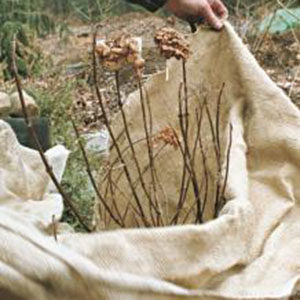
There’s Still Time To Plant!
Here in Zone 4, we are able to grow the first three types of hydrangeas. In warmer zones (zones 5 to 9) gardeners can also grow oak leaf hydrangeas. Fall is the best time for planting shrubs. Just be sure to follow the steps above, especially watering and mulching.
Here are a few of our favorites that you can plant right now for glorious blooms next spring.
Panicle Hydrangeas
Sometimes called PeeGee hydrangeas, these are late bloomers (summer into early fall). They're covered with elongated, cone-shaped flower heads. These start out white or green before blushing into pinks and peachy tones as the season progresses.
Strawberry Shake™ Hydrangea
Long-lasting white flowers quickly mature to a rich strawberry pink and deep rose as cool fall weather arises. This is a compact panicle hydrangea with sturdy stems that holds the beautiful flowers aloft. Up to 5' tall and 4' wide. Zones 4–8.
Candy Apple™ Hydrangea
This compact selection features big lime-green panicles. These mature to pure white and are held atop strong, sturdy stems that don't flop. Flowers and foliage take on rosy hues as temperatures drop in fall. Up to 5' tall and wide. Zones 4–8.
Mophead Hydrangeas
French, big leaf, mop head, call them what you may. These are the classic, high-summer hydrangeas with large round or lace cap flower heads. While white varieties stay white, those that start out pink or blue can range in color. This depends on the acidity or alkalinity of the soil. (Note: Not all macrophyllas are reliably hardy in the coldest zones. A tough winter can shut down their flower power.)
Blue Enchantress® Hydrangea
Striking ruby-black stems support big mophead flowers on this exquisite re-bloomer. The large blooms turn blue in acidic soils and have a pink hue in alkaline soils. They mature to cream-splashed green. Up to 5' tall and wide. Zones 4–9.
Seaside Serenade® Hamptons Hydrangea
Huge ball-shaped blooms with thick, intense-pink florets on amazingly tough stems. The naturally compact habit has robust foliage with a maroon color in the spring and cinnamon-red in the fall. Up to 3.5' tall and 3' wide. Zones 4–9.
Smooth Hydrangeas
Native to North America and one of the prettiest, most useful flowering landscape shrubs. Smooth hydrangeas bloom from late spring through summer into fall. Their big, round, flowers heads start out bright white and fade to limey green in the autumn.
Seaside Serenade® Bar Harbor Hydrangea
There's no need for another Annabelle option when you have Bar Harbor!
This is an extraordinary new, compact variety perfect for smaller spaces. Prolific amounts of big, white flowers turn heads all summer long. The straight, sturdy stems stand tall even in heavy rain. These are perfect for borders, containers, and cutting gardens. Up to 4' tall and wide. Zones 3–8.
Oakleaf Hydrangea
While not as cold tolerant as other types of hydrangeas. If your zone works for the oak leaf varieties, you need to plant them. Native to the U.S., they bloom best in areas where summers are somewhat hot. They can thrive in much dryer locations than their mophead cousins.
Ruby Slippers Oakleaf Hydrangea
Large, white blooms cover this shrub in summer and quickly age to a deep pink color. These large blooms remain upright on strong stems even after heavy rains. Oak-like foliage turns mahogany in fall. Up to 3.5' tall and 5' wide. Zones 5–9.
Snow Queen Oakleaf Hydrangea
Large, long clusters of flowers are held upright above the oak-like foliage. The flowers emerge white and become rose-pink in fall as leaves turn deep red-bronze. The exfoliate tan-brown bark is beautiful in winter. Up to 5' tall and 6' wide. Zones 5–9.
Learn More
- How to Select the Right Hydrangea for Your Garden
- Obsession: Panicle Hydrangeas
- 10 Things Hydrangea Lovers Should Know
- Your Guide to Pruning Flowering Shrubs
- Design School: 5 ways to use Seaside Serenade Hydrangeas
- We Build a Better Hydrangea!
Sign up for the Grow Beautifully newsletter to get first access to how-tos, free guides, interactive live webinars, pre-order availability, and so much more.




